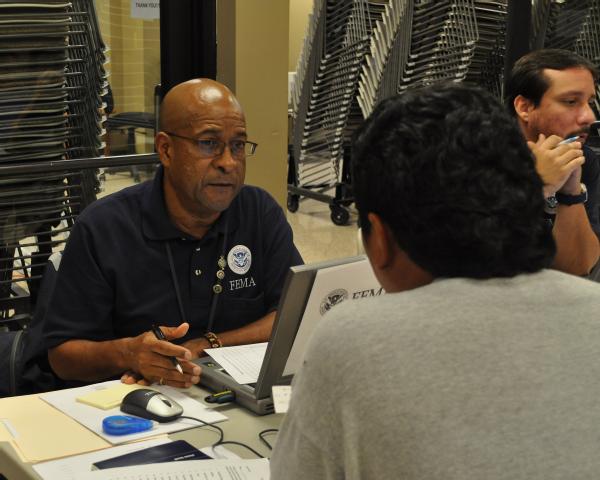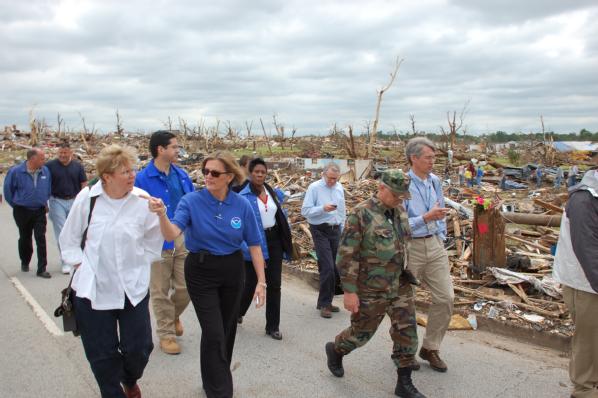Photos 5: Supporting Efforts for Southern U.S. Tornadoes and Flooding
We continue to support the affected states and the entire emergency management team in the ongoing recovery, from the severe storms in the Midwest to the heavy flooding along the Mississippi River.
Throughout every step of the process, we continue to work with our partners to support those impacted by the recent disasters. Here are some of recent shots from our photo library that show the emergency management team in action:
Joplin, Mo., May 29, 2011 -- FEMA personnel work inside a Mobile Emergency Response Support vehicle, equipped with video and telephone communications equipment. FEMA is supporting the ongoing recovery efforts in Joplin, Mo., providing assistance to disaster survivors and the affected community.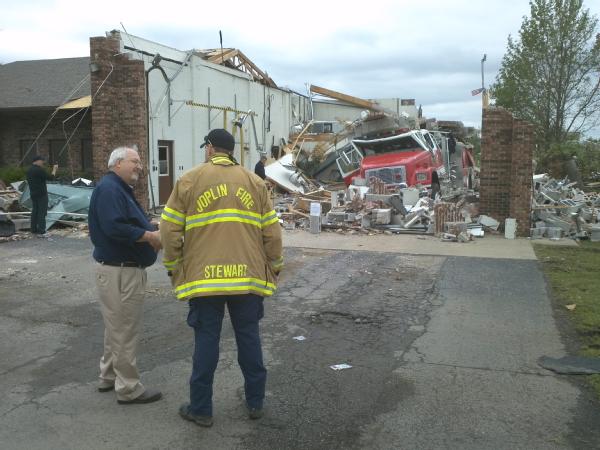
Joplin, Mo., May 26, 2011 -- Administrator Craig Fugate surveys a damaged fire station with a Joplin firefighter. Visit the disaster page for the latest updates on the Joplin recovery.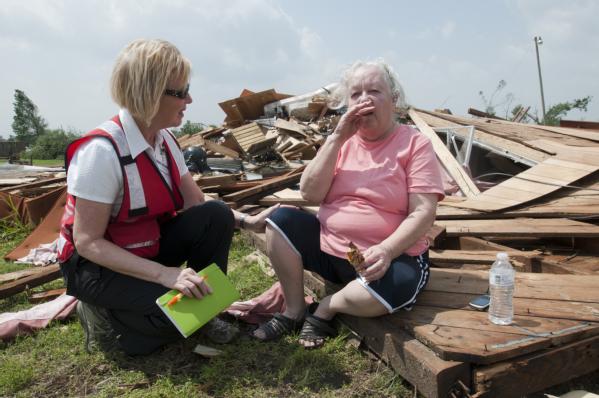
Denning, Ark., May 25, 2011 -- Donna Wood, a Red Cross worker, talks to a resident of Denning, Ark., whose home, in the background, was damaged when a tornado ripped through the area.
Big Rock, Tenn., May 24, 2011 - Larry Combs, Chase Lewis and Daniel Lewis replace power lines knocked down by a tornado which struck May 23. FEMA supports and helps fund replacement of public equipment and facilities.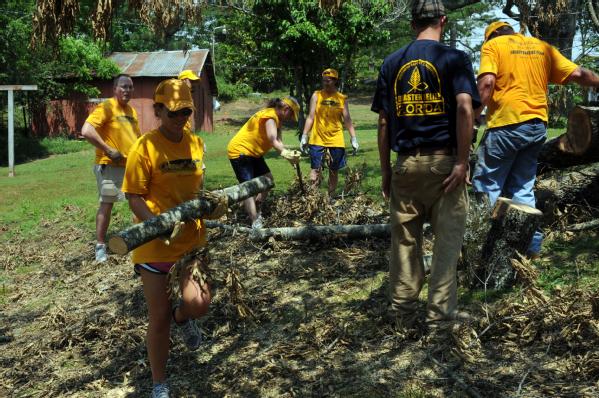
Sipsey, Ala., May 24, 2011 -- Members of the Florida Southern Baptist Disaster Relief Association are helping a homeowner cut and pull debris to the street for county pickup. Faith-based volunteers are important partners with FEMA in helping survivors recover from the deadly April tornado.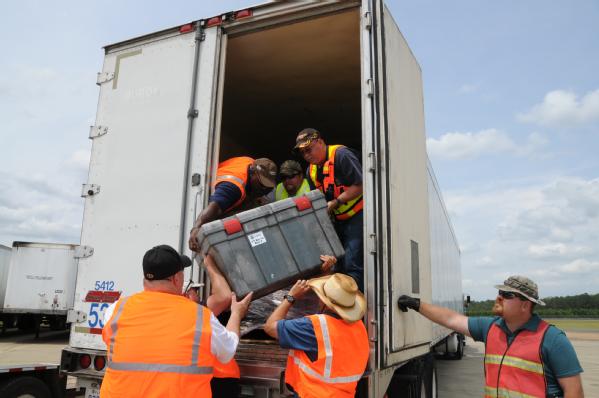
Pineville, La., May 23, 2011 -- Logistics teams at the staging area in Camp Beauregard load what are known as commonly used shelter items kits now part of the commodities delivered to shelters in the event of a disaster.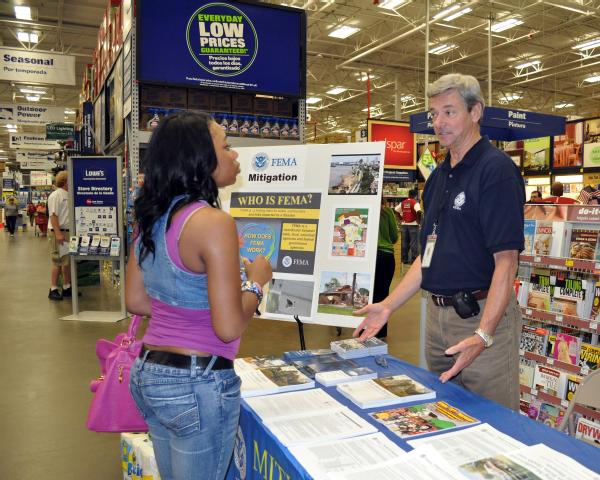
Memphis, TN, May 23, 2011 -- James Zemlicka, Hazard Mitigation specialist, answers questions for a Lowe's customer on rebuilding safely. Hazard Mitigation representatives are located at Lowe's and Home Depot stores throughout western Tennessee.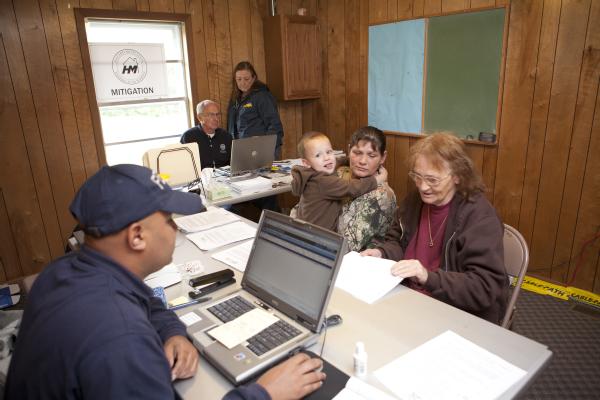
Brayton, Tenn., May 17, 2011 -- David Rodriguez, an applicant assistant specialist, interviews Dorothy L.Green (right), Peggy Giunta and her son Haeden Gray. The applicant interview is an important part of the recovery process.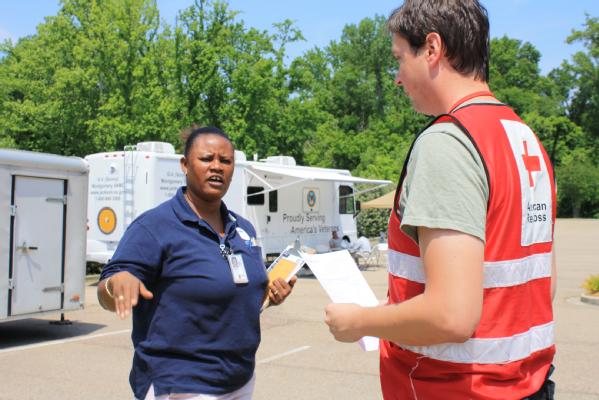
Vicksburg, Miss., May 18, 2011 -- Shnader Bellegrade, FEMA community relations specialist, collaborates with Todd Hallbaur of the American Red Cross regarding assistance for evacuated survivors of the floods in Vicksburg Miss.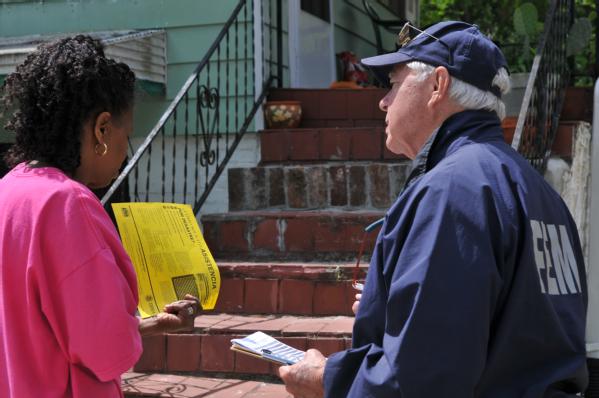
Pratt City, Ala., May 17, 2011 – Steve Huffstutler, FEMA community relations specialist, explains the registration process to a homeowner that had some damage to her house. Teams community relations staff are going door-to- door in communities to encourage people to register for assistance and answer questions about the process.


